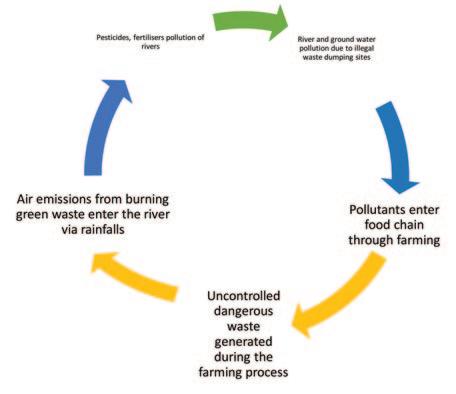
3 minute read
Circular Economy: a transformative and disruptive model in action by Lampros Labros Bouklis
> FOCUS ON SUSTAINABILITY CIRCULAR ECONOMY: A TRANSFORMATIVE AND DISRUPTIVE MODEL IN ACTION
LAMPROS LABROS BOUKLIS
Advertisement
Lampros Labros Bouklis
Lampros Labros Bouklis (Sustainability Leadership, 2014) is a Physics graduate of the University of Patras who specialised in Geophysics at the University of Vienna (1990). He holds two Masters degrees in: “Business strategy and environmental management” (University of Bradford, 1996) and “Sustainability Leadership” (Robinson College, 2017); he is also completing doctoral research at Rheinische-Westfälische Technische Hochschule Aachen on solid waste management and circular economy. He has been active as a sustainability consultant since 1997. In 2000 he was one of the first Greek environmental auditors in accredited certification bodies. Since 2006 he has been a member of the Board of the International Network for Environmental Management, based in Hamburg. He has been elected several times as a Board / Executive member of the Hellenic Solid Waste Management Association (HSWMA).
Circular economy (CE) is different from the conventional model “take – make – waste”. In a circular economy, manufacturers design products to be reusable, extend the use of products and materials in the economy, place sustainable products in the market: make value chains more sustainable. For example, electrical devices are designed in such a way that they can be easier to repair. Products and raw materials are also reused as much as possible. It involves decoupling economic activities from the consumption of finite resources. The three main principles of CE are: designing out waste and pollution; keeping products and materials in use; and regenerating natural systems. The pioneering Ellen Mac Arthur Foundation, based in the UK since 2010, has initiated and explored CE and influenced multinational companies, organisations and governments.
The European Union since 2015 has adopted CE and obliged the member states to achieve specific quantitative and qualitative targets, while the United Nations Environment Programme (UNEP) strategically supports and boosts the shift to a CE globally as an essential action to achieve the climate goals agreed by the international community and to help rebuild the world’s economies stronger, greener and better. During my Master’s degree studies in Sustainability Leadership (2014-16) I focused on the circular economy by investigating the barriers and opportunities in developing models via my dissertation thesis. In 2015 I presented to ABTA (Association of British Travel Agents) members, at their annual conference, the implications of circular economy in the tourism sector and since then I have developed studies for the proper implementation of CE in the Peloponnese region of Greece and other organisations/ companies. In 2015 I was also distinguished, in an international competition organized by VEOLIA, as one of the six best innovative proposals for broader solid waste management. The subject of my personal scientific proposal, called “optimum resource collection” was the use of IT in a solid waste collection based on circular economy principles (March 2015, Resource –Ecobuild, ExCel Centre, London).
Since August 2020 I have been personally involved in inventing, designing and establishing, together with Prof. G. Vokas, a new course at the University of West Attica (Athens) named " Circular Economy & Sustainable Development: Leadership, Technology, Innovation". This Masters course will commence in 2022 as the first in Greece that explores in a holistic approach the concept of circular economy and I am now supporting it as the Organizational Development Manager. Since October 2021, I am also endorsed by the Board Members of the HSWMA to act for the proper training, awareness, education and standardisation of the process of CE in Greece.
A genuine circular economy stops the current conventional circularity of negative impacts. L.Bouklis, 2016.









